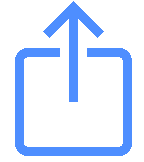Navigating the vibrant cities of the United Arab Emirates, perhaps exploring the architectural wonders of Downtown Dubai or the cultural treasures of Abu Dhabi, you might be wondering how to best utilize its world-class public transportation system? The UAE prides itself on its modern, efficient, and ever-expanding public transport network, offering a convenient and often cost-effective way to get around without the need for a private car. We’ll guide you through the ins and outs of using public transportation here.
The Backbone: Dubai Metro and Tram
In Dubai, the Metro stands as the cornerstone of its public transportation system. It’s a fully automated, driverless rail network that offers both elevated and underground routes, providing stunning views of the city. With its Red and Green lines, the Metro connects key areas like Dubai International Airport (DXB), Downtown Dubai (Burj Khalifa/Dubai Mall), Dubai Marina, and many business districts. Complementing the Metro, the Dubai Tram serves the areas of Al Sufouh, Jumeirah Lakes Towers (JLT), and Dubai Marina, offering direct connections to the Metro and providing a convenient link for residents and tourists alike. Both are exceptionally clean, punctual, and air-conditioned, making travel comfortable even during peak summer months.
Nol Card: Your Key to Dubai’s Public Transport
For all public transport in Dubai, you’ll need a Nol Card. This smart card allows you to pay for your journeys on the Metro, Tram, public buses, and even some water taxis. There are different types of Nol cards:
- Red Ticket: A paper-based card, ideal for tourists or infrequent users. You can load it with up to 10 trips or 5 daily passes, but it’s not reloadable for long-term use.
- Silver Card: A durable, reloadable plastic card suitable for regular users. It offers better value for money than the Red Ticket and can be topped up with credit.
- Gold Card: Offers access to the exclusive Gold Class cabins on the Metro and Tram, which are more spacious and less crowded, albeit at a higher fare.
- Blue Card: A personalized card with added security features, suitable for residents and offering concessionary fares for students, seniors, and people of determination.
You can purchase and top up Nol cards at Metro stations, bus stations, and various authorized retailers.
Public Buses: Extensive Network Coverage
Dubai’s public bus network is extensive, reaching areas not covered by the Metro or Tram. The buses are modern, air-conditioned, and equipped with comfortable seating. They are an excellent option for shorter distances, local neighborhood travel, and reaching areas like Jumeirah, Deira, and various residential communities. You’ll need to use your Nol Card to tap in and out when boarding and alighting. Bus routes are well-marked, and bus stops often have air-conditioned shelters, a welcome relief during the hotter months.
Taxis and Ride-Hailing Services
While not strictly “public transportation,” taxis and ride-hailing services are incredibly popular and integrated into the UAE’s transport ecosystem. Government-regulated taxis, easily identifiable by their cream color with different colored roofs (e.g., red for Dubai Taxi Corporation, blue for Airport Taxis), are widely available. You can hail them on the street, find them at designated ranks, or book them via phone. Ride-hailing apps like Careem and Uber offer convenient booking through your smartphone, allowing you to track your ride and pay digitally. Careem also offers specific “Ladies” taxis driven by female drivers, providing an added layer of comfort for female travelers.
Water Transport: A Scenic Alternative
Dubai offers a unique way to travel with its water transport options, particularly along Dubai Creek and Dubai Marina. The traditional abra (wooden boat) is a charming and affordable way to cross Dubai Creek, connecting Deira and Bur Dubai. These rides cost approximately AED 1 per person and offer a glimpse into old Dubai. Modern water taxis and Dubai Ferry services also operate in various areas, providing scenic routes and connecting key waterfront attractions. These services are often integrated with the Nol Card system, making them easy to use.

Public Transport in Abu Dhabi: Darb and Hafilat Card
In Abu Dhabi, the public transport system is managed by the Integrated Transport Centre (ITC) under the Darb initiative. The primary mode of public transport is the extensive bus network. To use the buses, you’ll need a Hafilat Card, Abu Dhabi’s equivalent of the Nol Card. These cards can be purchased and topped up at bus stations, ticket vending machines, and some customer service centers. The bus network covers most areas of Abu Dhabi city and extends to the outskirts, offering a comfortable and cost-effective way to travel.
Inter-City Buses: Connecting the Emirates
If you wish to travel between emirates, for example, from Dubai to Abu Dhabi or from Sharjah to Ajman, inter-city bus services are available. These services are operated by the respective public transport authorities. For instance, buses frequently travel between Dubai and Abu Dhabi, taking approximately 1.5 to 2 hours, depending on traffic. They offer a comfortable and affordable alternative to taxis or rental cars for longer distances. You can usually find information on routes and schedules on the RTA (Dubai) or ITC (Abu Dhabi) websites.
Planning Your Journey and Using Apps
To make the most of public transportation, consider using official apps. The RTA Smart App in Dubai is invaluable for planning your Metro, Tram, and bus journeys, providing real-time information, routes, and fare calculations. Similarly, the Darb app is essential for navigating Abu Dhabi’s public buses. Google Maps also provides accurate public transport directions for both cities. These apps can help you estimate travel times and ensure you choose the most efficient route for your destination.
Courtesy and Etiquette on Public Transport
Using public transport in the UAE is generally a pleasant experience, thanks to strict rules and a high regard for cleanliness and order. Always adhere to signs, respect designated seating (e.g., for women and children or people of determination), and avoid eating or drinking on the Metro or Tram, as this can incur fines. Maintaining a respectful demeanor and avoiding loud conversations will contribute to a comfortable journey for everyone.
The Cost-Effectiveness of Public Transport
Using public transportation in the UAE, especially in Dubai, is significantly more cost-effective than relying solely on taxis or renting a car. For example, a single Metro journey in Dubai can cost approximately AED 3 to AED 15, depending on the number of zones you cross. Daily passes and weekly passes are also available for those who plan to use public transport extensively, offering even greater savings. This makes it an excellent option for budget-conscious travelers and daily commuters alike. The www.few.ae team highly recommends utilizing these well-developed systems for seamless travel.


 then "Add to Home Screen"
then "Add to Home Screen"